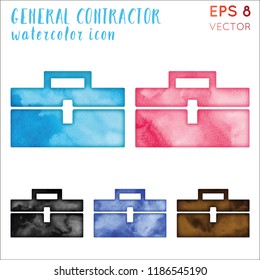Essential Seasonal Aspects Of Commercial Outside Painting: What You Need To Understand
Essential Seasonal Aspects Of Commercial Outside Painting: What You Need To Understand
Blog Article
Content By-Regan Browne
When you're preparing a business exterior painting task, seasonal elements can make or break your outcomes. You'll intend to consider how temperature and humidity impact paint application and drying times. Picking the appropriate period can ensure your paint sticks correctly and lasts much longer. Yet which seasons are genuinely the most effective for this sort of job? Let's discover the crucial elements that can impact your job's success.
The Effect of Temperature Level on Paint Application
When you're preparing an industrial external paint project, the temperature can substantially influence exactly how well the paint sticks and dries.
Preferably, you want to paint when temperatures range between 50 ° F and 85 ° F. If straight line paint 's also chilly, the paint might not treat properly, bring about issues like peeling off or splitting.
On the other hand, if it's also warm, the paint can dry as well swiftly, preventing appropriate bond and resulting in an irregular finish.
You must also think about the moment of day; morning or late afternoon offers cooler temperature levels, which can be more beneficial.
Always inspect the manufacturer's referrals for the specific paint you're using, as they usually give advice on the suitable temperature variety for optimal outcomes.
Humidity and Its Effect on Drying Times
Temperature level isn't the only environmental variable that influences your industrial external painting job; humidity plays a significant duty too. High moisture levels can reduce drying times considerably, impacting the overall quality of your paint task.
When the air is saturated with moisture, the paint takes longer to treat, which can result in problems like poor adhesion and a higher risk of mildew growth. If you're painting on a particularly humid day, be prepared for extensive wait times in between layers.
It's critical to monitor regional weather and strategy accordingly. Preferably, aim for moisture degrees in between 40% and 70% for optimal drying.
Maintaining https://interior-painter-near-me56655.actoblog.com/35122519/pro-tips-for-an-unified-working-connection-with-residence-paint-specialists consider mind ensures your job stays on track and delivers a long lasting coating.
Best Seasons for Commercial Outside Paint Projects
What's the best time of year for your business exterior painting projects?
Spring and early fall are commonly your best bets. During these periods, temperature levels are mild, and moisture degrees are often lower, producing excellent conditions for paint application and drying.
Prevent summer season's intense heat, which can trigger paint to dry as well quickly, bring about poor adhesion and finish. Similarly, winter's cold temperatures can prevent appropriate drying and curing, running the risk of the long life of your paint work.
Go for days with temperature levels in between 50 ° F and 85 ° F for optimum outcomes. Remember to inspect the neighborhood weather prediction for rain, as damp problems can wreck your project.
Planning around these variables guarantees your paint job runs smoothly and lasts much longer.
Verdict
In conclusion, preparing your business exterior painting projects around seasonal considerations can make a substantial distinction in the end result. By organizing toronto exterior painting estimates throughout the excellent temperatures and moisture levels, you'll ensure far better bond and drying times. Bear in mind to watch on regional weather forecasts and pick the correct time of year-- spring and early fall are your best bets. Taking house painting contractors near me will certainly assist you attain a long lasting and professional surface that lasts.
